India boasts a rich heritage of martial arts, with a diverse range of disciplines that have evolved over centuries. From ancient combat techniques passed down through generations to contemporary forms that blend tradition with innovation, Indian martial arts are deeply rooted in history, culture, and philosophy. As we delve into the year 2024, let’s explore the top 10 most famous martial arts in India, each offering a unique glimpse into the country’s martial prowess and spiritual depth.
Top-10 Famous Martial Arts in India
India boasts a rich tapestry of martial arts, including Kalaripayattu, Silambam, Thang-Ta, Gatka, Mallakhamb, Kuttu Varisai, Musti Yuddha, Parikhanda, Inbuan Kusti, and Lathi. Each art embodies unique traditions, techniques, and cultural significance.
Here is the list of top-10 most famous martial arts in India:
| Top-10 Most Famous Martial Arts in India | ||
| Martial Arts | Origin | Techniques |
| Kalarippayattu | Kerala, 4th Century A.D. | Uzhichil, Otta, Maipayattu, Puliyankam, Verumkai |
| Silambam | Tamil Nadu | Swift movements, thrusts, cuts, sweeps |
| Thang-ta and Sarit Sarak | Manipur | Armed and unarmed combat |
| Thoda | Himachal Pradesh | Wooden bows, arrows |
| Gatka | Punjab | Weapon-based combat |
| Lathi | Punjab, Bengal | Cane sticks |
| Inbuan Wrestling | Mizoram | Wrestling |
| Kuttu Varisai | South India | Grappling, striking, locking |
| Musti Yuddha | Varanasi | Kicks, punches, knee and elbow strikes |
| Pari-Khanda | Bihar | Sword and shield |
Kalarippayattu
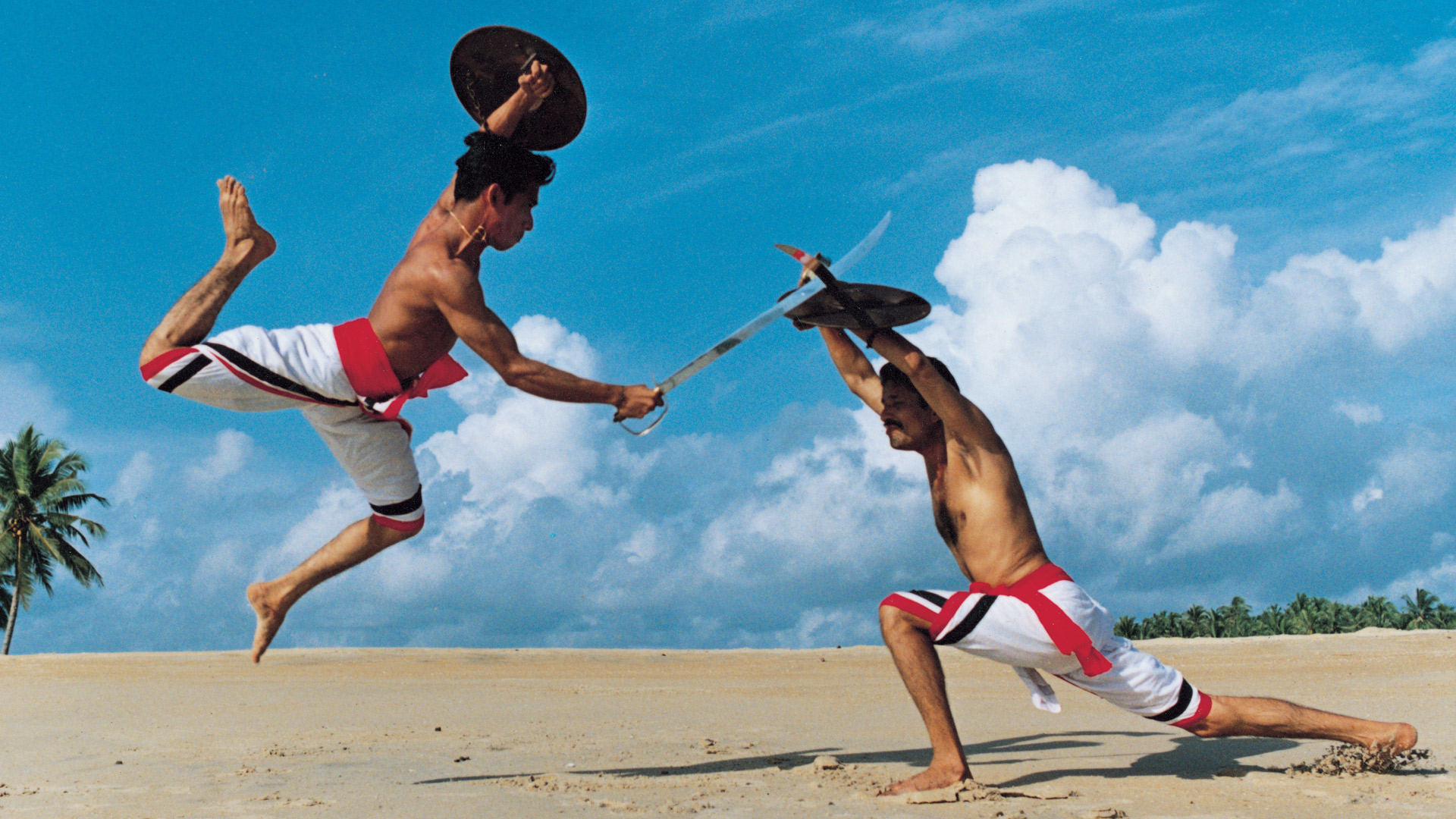
Origin: Kerala
Techniques: Uzhichil, Otta, Maipayattu, Puliyankam, Verumkai
Kalaripayattu, rooted in Malayalam culture, finds its essence in Kalari, a training ground introduced by the legendary sage Parasurama. This ancient martial art serves as a form of self-defense and fitness regimen, encompassing unarmed combat, weaponry, and physical exercises. Renowned for its intricate footwork and diverse techniques, it remains devoid of musical accompaniment. Its popularity, bolstered by cinematic depictions like “Ashoka” and “The Myth,” extends to women practitioners like the legendary heroine, Unniyarcha, famed for her prowess in battle.
Silambam
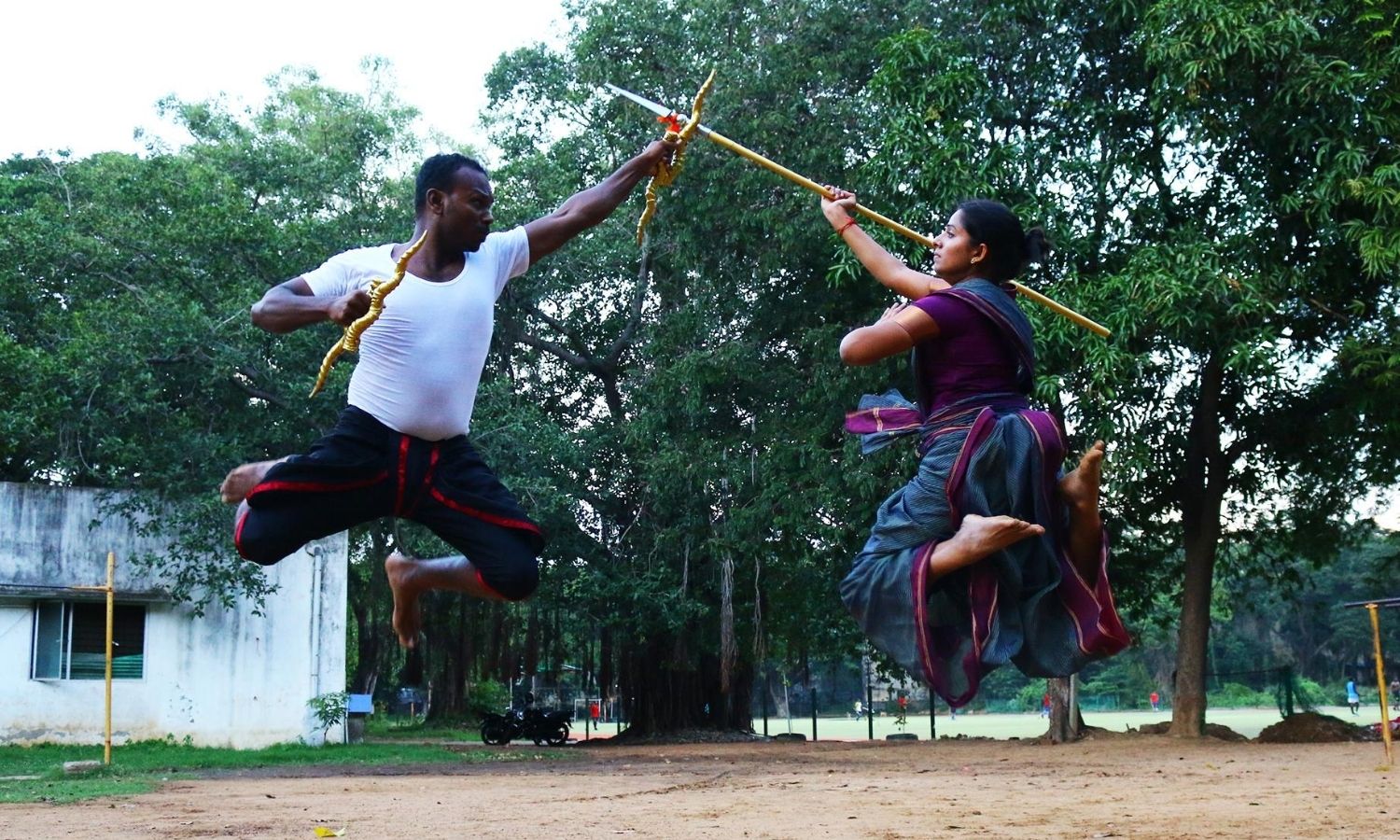
Origin: Tamil Nadu
Techniques: Swift movements, thrusts, cuts, sweeps
Silambam, a refined martial art originating in Tamil Nadu, boasts a lineage dating back to the reigns of Pandya, Chola, and Chera rulers, evident in Tamil literature like “Silapaddigaram.” Its techniques, emphasizing swift footwork and various strikes, have transcended borders, finding popularity in Malaysia as both sport and self-defense. Credited to Lord Muruga and sage Agasthya, Silambam’s roots trace back to Vedic times, highlighting its historical significance and enduring legacy.
Thang-ta and Sarit Sarak
Origin: Manipur
Techniques: Swift movements, thrusts, cuts, sweeps
Thang-ta and Sarit Sarak, born from the Meitei culture of Manipur, constitute a unique martial arts tradition. Thang-ta, encompassing sword and spear combat, gained prominence during the 17th century, employed by Manipuri kings in resistance against British colonial rule. Also known as HuyenLallong, it incorporates various weapons like axes and shields, practiced in ceremonial, performance, and combative contexts, echoing its rich historical and cultural significance in Manipuri society.
Thoda
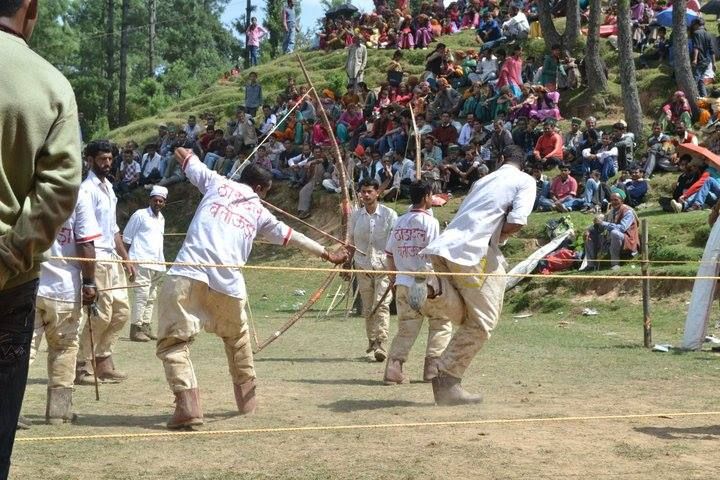
Origin: Himachal Pradesh
Techniques: Wooden bows, arrows
Thoda, originating from Himachal Pradesh, derives its name from a wooden piece affixed to arrowheads, moderating their lethality. This amalgamation of martial art, sport, and culture unfolds annually during Baisakhi. Rooted in the Mahabharata era, it showcases archery skills prevalent in the valleys of Kullu and Manali. The event, featuring two groups of 500 individuals each, combines archers and dancers, symbolizing a spirited legacy linked to the mythical heritage of the Pandavas and Kauravas.
Gatka
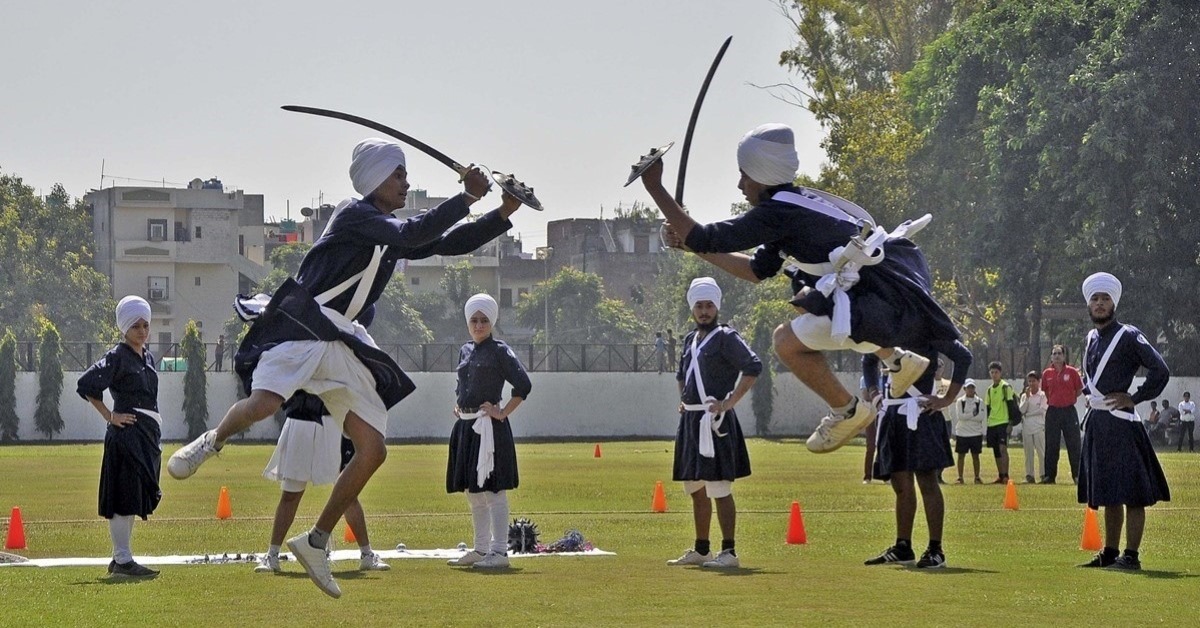
Origin: Punjab
Techniques: Weapon-based combat
Gatka, a martial art hailing from Punjab, is a weapon-based tradition practiced by Sikh communities. Its name, Gatka, signifies freedom tied to grace or possibly derives from the Sanskrit term “Gadha,” meaning mace. Incorporating weapons like Kirpan, Talwar, and Kataar, Gatka is showcased during diverse events and celebrations across Punjab, including fairs. It stands as a testament to Sikh heritage, embodying a blend of skill, valor, and cultural identity.
Lathi

Origin: Punjab and Bengal
Techniques: Cane sticks
Lathi, an ancient martial art predominantly practiced in Punjab and Bengal, revolves around the use of a sturdy stick, typically cane, measuring 6 to 8 feet in length and occasionally tipped with metal. Embedded in the cultural fabric of India, Lathi serves not only as a martial discipline but also as a popular sport in rural villages nationwide. Its enduring legacy underscores the significance of traditional weaponry in martial arts heritage.
Inbuan Wrestling

Origin: Mizoram
Techniques: Wrestling
Inbuan Wrestling, originating from Mizoram, traces its roots to the Duntland village in 1750 A.D. This martial art boasts stringent regulations, forbidding actions like stepping out of the circle, kicking, and knee bending. Wrestlers engage in gripping the belt worn around their waist, a pivotal aspect of the sport. Emerging as a celebrated tradition, Inbuan Wrestling gained prominence as a sport following the migration of people from Burma to the Lushai hills.
Kuttu Varisai
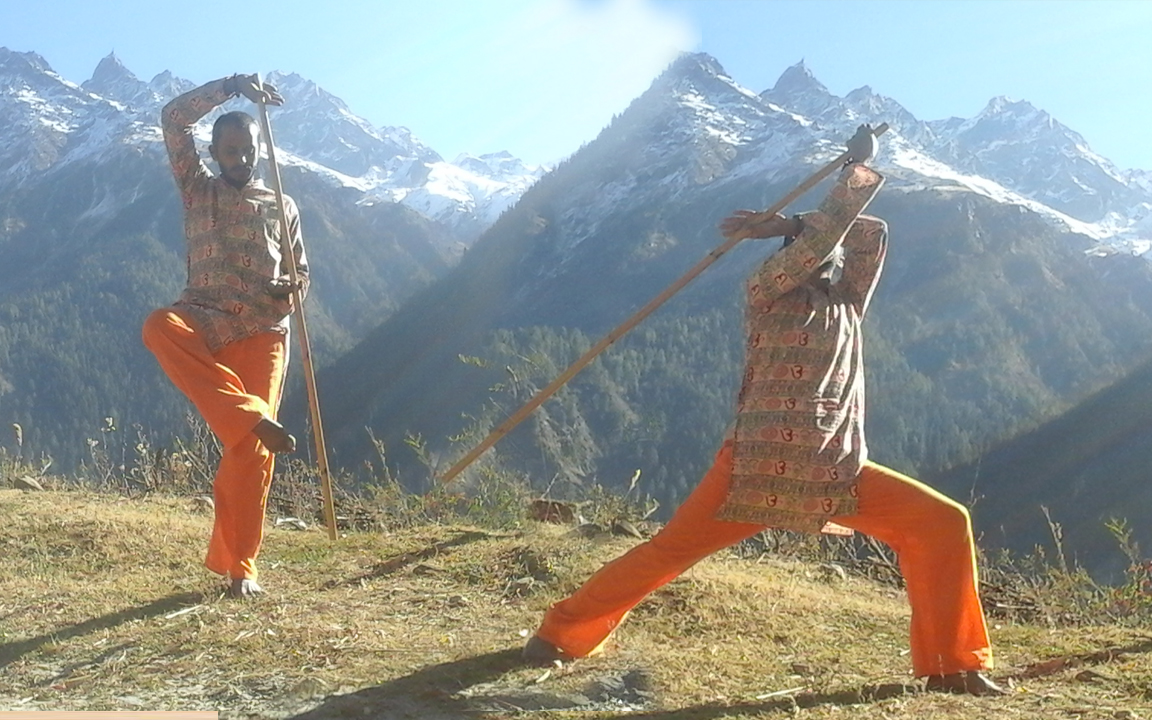
Origin: South India
Techniques: Grappling, striking, locking
Kuttu Varisai, predominantly practiced in South India and embraced in Sri Lanka’s northeastern region and Malaysia, finds its roots in Sangam literature from the first or second century B.C. Meaning “empty hand combat,” it’s a Dravidian martial art emphasizing unarmed techniques. Integrating yoga, gymnastics, and breathing exercises, it fosters athleticism and footwork. Utilizing animal-based sets like snake, eagle, tiger, elephant, and monkey, Kuttu Varisai embodies a holistic approach to martial arts training.
Musti Yuddha

Origin: Varanasi
Techniques: Kicks, punches, knee and elbow strikes
Musti Yuddha, originating from Varanasi, is an unarmed martial art renowned since 1960. It encompasses kicks, punches, knee strikes, and elbow strikes, fostering physical, mental, and spiritual development. Named after Hindu gods, its fights are categorized into Jambuvanti for submission, Hanumanti for technical prowess, Bhimaseni for strength, and Jarasandhi for joint manipulation. This ancient art amalgamates combat techniques with spiritual significance, reflecting a holistic approach to martial training.
Pari-Khanda
Origin: Bihar
Techniques: Sword and shield
Pari-Khanda, born in Bihar and crafted by the Rajputs, integrates the shield (“Pari”) and sword (“Khanda”) in combat. This martial art employs a blend of offensive and defensive maneuvers, emphasizing the synergy between offense and defense. Its techniques, characterized by sword and shield proficiency, are also incorporated into the traditional Chhau dance of Bihar, showcasing its cultural significance and enduring legacy in the region’s martial and performing arts.




 Which Country is Known as the Land of Ch...
Which Country is Known as the Land of Ch...
 Which Bird is known as the King of Birds...
Which Bird is known as the King of Birds...
 Which City of Austria is Known as the Ci...
Which City of Austria is Known as the Ci...







